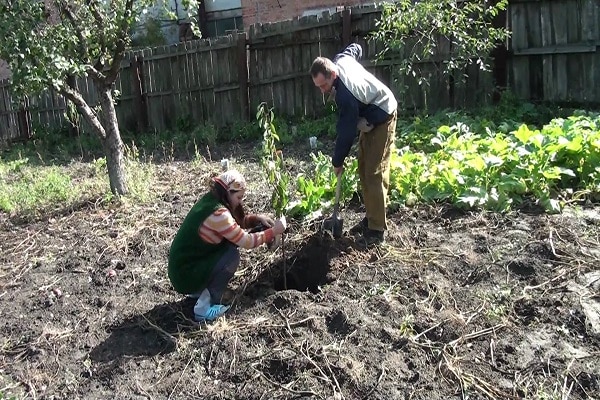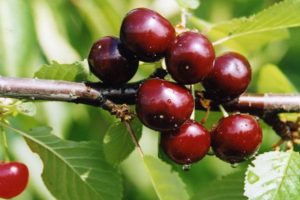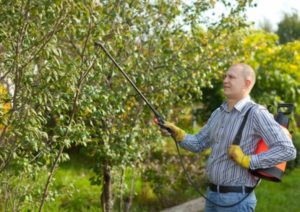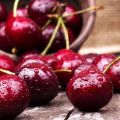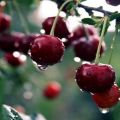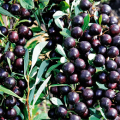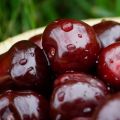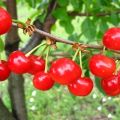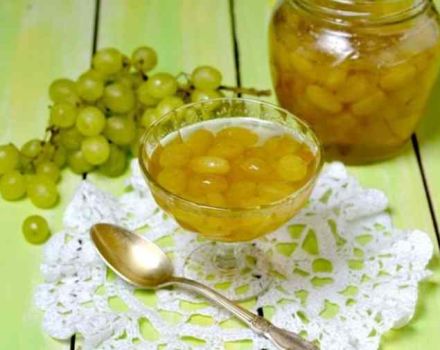Description description of the best varieties of Siberian cherry, planting and care in the open field
Certain varieties are recommended for each region. Siberian cherry must be frost-resistant and ripen quickly so that early autumn does not ruin the fruit. In addition, trees must be properly maintained. Observing the requirements, an excellent harvest is obtained in any conditions.
Climatic conditions of the region
For the correct selection of the variety, it is necessary to know the climate of the region in which the trees will be grown. The peculiarity of the weather conditions in Siberia and the Urals is that the temperature contrast is especially pronounced in the south. Since the average summer temperature there reaches + 24 ⁰С, and the winter -15 ⁰С. Whereas in the north summer +6 ⁰С, winter -22 ⁰С.
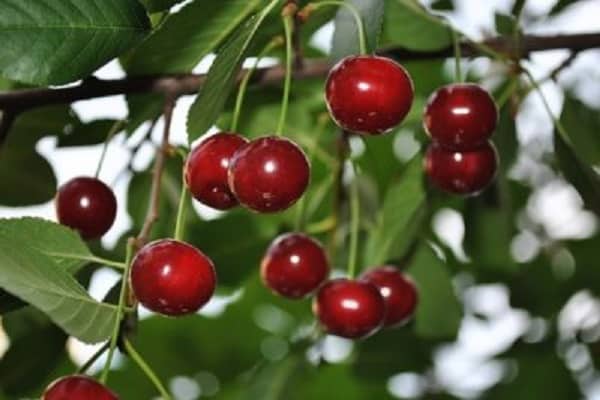
It is believed that the climate in Siberia is continental or moderately continental. In the central part of the region, a mountainous climate prevails, so no one is engaged in gardening there. Another feature of the climate, throughout the region, there is a sharp change in air masses and instability of the weather.
The varieties chosen for this area must be resistant to extreme weather changes and strong winds.
In the western part, there are no strong winds in winter, the weather is mostly dry. When choosing a species for these regions, this feature should be taken into account.
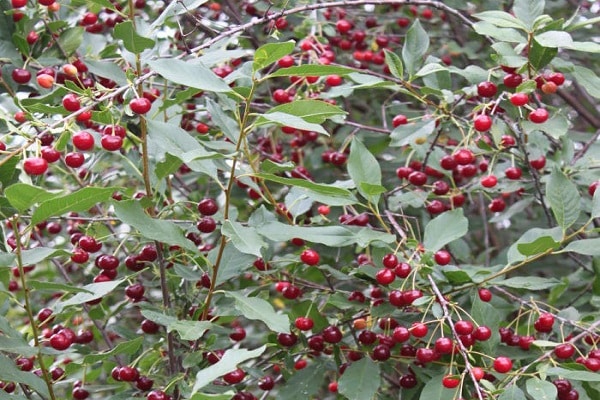
What varieties are recommended to plant in the Urals and Siberia
It is important not only to know the features of the climate, but also to take them into account when choosing a species for planting. It is advisable to select self-fertile. When choosing a type, attention must be paid to:
- frost resistance;
- the volume of the crop;
- fruiting period;
- climate resilience;
- resistance to disease;
- the ability to withstand strong winds without affecting the yield.
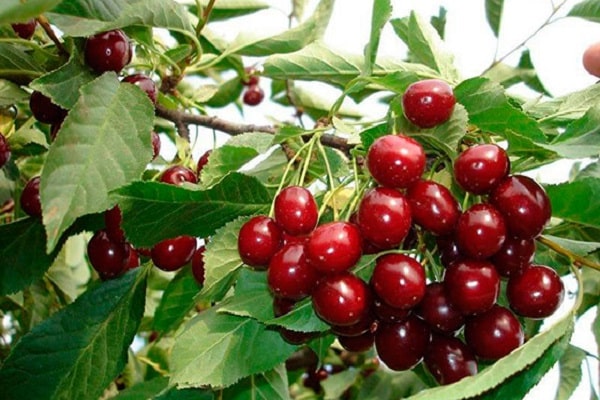
A variety that has all these data, sometimes is not able to give a full harvest. Therefore, it is important not only to choose the right variety and take proper care of it. Cherries, like sweet cherries, need to be grown with special care.
How the tree overwintered is determined by the wood. If it is spoiled by mice, you should better wrap the trunk for the winter.

Felt Cherry
Of all the cherries, this is the sweetest. Otherwise, it is called baby or micro-cherry.She received such names for the low size of an adult plant. The peculiarity of the tree is that the berries are tender, their flesh is dense. The disadvantage is that the bone is very difficult to separate. Therefore, processing is difficult.
These cherries are winter-hardy, give a rich harvest every year and bloom beautifully. General characteristics:
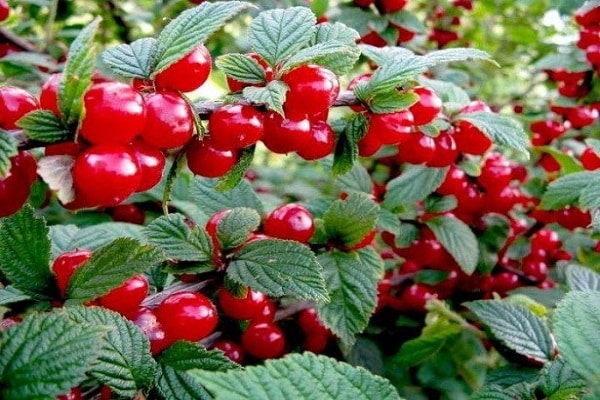
- height 1-3 m;
- flowering 14 days;
- flowers are pink, delicate;
- buds are able to withstand a drop in temperature to -3 ⁰С without harming the crop;
- ripening of berries occurs in the last decade of June, cherries do not crumble;
- fruit color from light pink to maroon shade;
- the taste is sweet;
- young seedlings begin to bear fruit from the age of 2-3;
- harvest volume 14 kg per bush.
One of the significant disadvantages of the tree is 5-year fruiting. Then a strong anti-aging pruning is carried out.
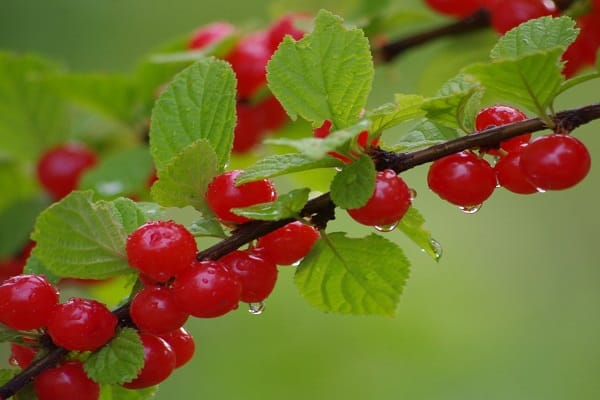
Autumn Virovskaya
This cherry appeared back in 1988 as a result of crossing several varieties.
Description:
- medium-sized;
- semi-spreading;
- not capable of self-pollination;
- oval crown;
- fruits weigh 3.6 g;
- wide oval shape;
- the color of the berries is dark, slightly pubescent;
- sweet and sour taste;
- the bone is not separated.
The plant calmly tolerates severe winters, is immune to clasterosporium disease. The variety is one of the best, according to gardeners.
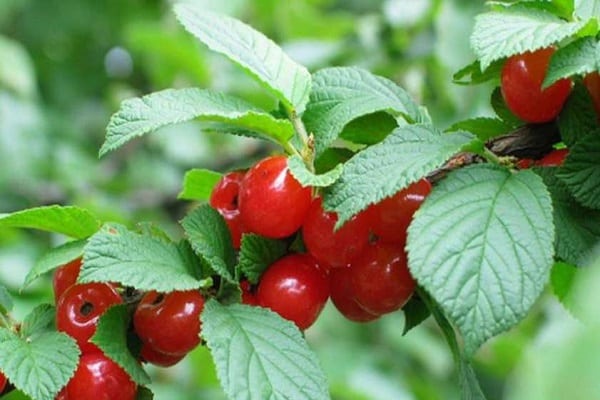
Princess
A variety of felt cherry adapted to harsh climatic conditions. It is a decorative decoration of the garden. The berries are sweet, suitable for any method of processing and fresh consumption. Summer residents appreciate it for its yield and undemanding care.
Description:
- an adult plant reaches 1.5 m;
- no root growth;
- self-infertility;
- frost-resistant;
- compactness;
- medium thickened crown;
- flowers are white;
- large berries;
- the shade of the fruit is pink;
- oval;
- weight 4 g;
- the taste is sweet and sour;
- one plant is capable of producing 10 kg of fruit;
- berries do not lie, do not tolerate transportation;
- berry picking takes place in the last decade of July.
The peculiarity of the variety is that it perfectly resists coccomycosis, but is affected by moniliosis. Cherry tree-like, requires constant anti-aging pruning.
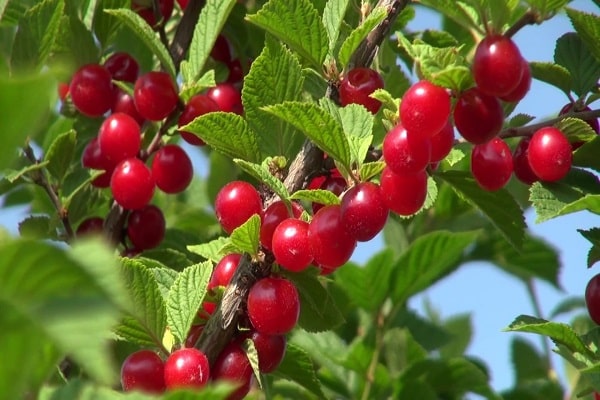
Natalie
The tree grows tall in comparison with other varieties of felt cherries. The crop is harvested stably, with proper care and proper pruning of branches, high yield rates of the variety are obtained.
Description:
- height 1.8 m;
- the crown is ovoid;
- flowers are medium-sized, white;
- harvesting falls on the 20th of July;
- plant yield 9 kg;
- the first time bears fruit in the 2nd year, continues to bear fruit for 16-18 years;
- berries are round, large;
- weight 4 g;
- sweet;
- used for all kinds of use.
Bushes do not tolerate waterlogging of the soil, it is recommended to control moisture standards.
The characteristics of the variety are excellent, summer residents appreciate it for long fruiting and taste.
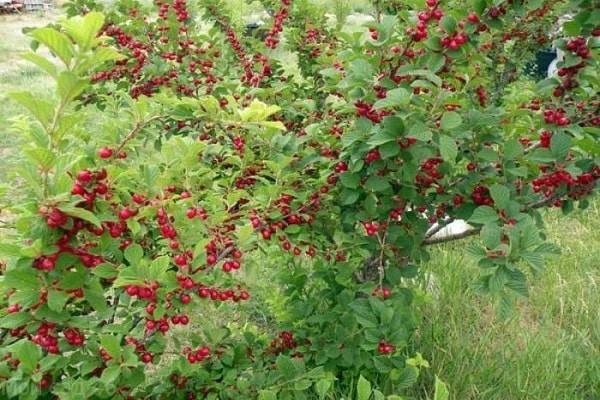
Early varieties
Cherry varieties that ripen early are in great demand. This decision is due to the fact that late species often do not have time to ripen. Autumn comes early in Siberia and the Urals. There are specially bred early species that are in demand among gardeners.
Brusnitsyna
Familiar to many summer residents. It is appreciated for the unique taste of fruits freshly picked from the branches.
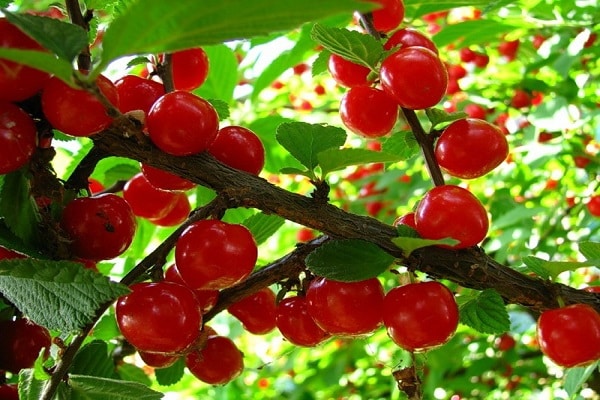
Specifications:
- an adult plant reaches 2 m;
- bush type plant;
- winter hardy;
- has average field health;
- self-pollinated;
- the shade of berries is dark red;
- rich taste with sourness;
- weighs 6 g;
- an adult plant produces 20 kg of berries;
- fruiting begins in the 3-4th year after planting the seedling;
- in the future it will delight the owners with a high yield for a long time.
In some sources, it is recommended to plant Mayak cherries nearby to increase yields.
Does not require special personal care. It perfectly tolerates any formation. Cherries are able to maintain their shape, since the annual growth is 0.3-0.35 m.
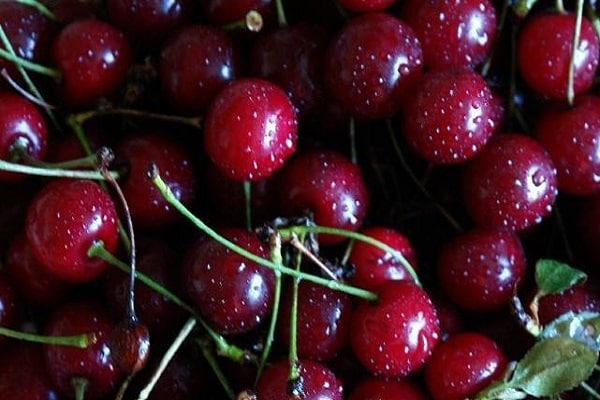
Ural standard
Summer residents acquire cherries that yield a crop in a short time. The variety is fast-growing and is immune to major crop diseases.
Characteristic:
- an adult plant reaches 2 m;
- the crown is sparse, slightly drooping;
- bush type plant;
- self-fruitless;
- large berries;
- flat-round shape;
- the shade of the fruit is red;
- sweet with sourness;
- harvest volume 7-8 kg per bush;
- are kept average.
The most important quality of the Ural Standard is its high frost resistance. Pollinators are planted nearby to help increase the yield.

Chocolate girl
The variety got its name due to the rich color of the berries. I fell in love with gardeners for the ease of care and the relatively small size of an adult tree. The harvest from one plant is enough to meet the needs of a family of 5-6 people.
Specifications:
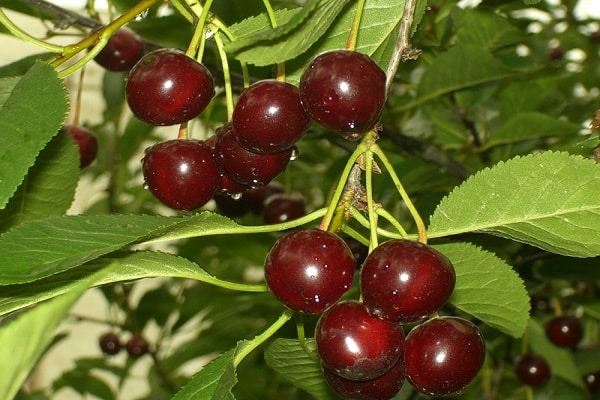
- an adult plant reaches 2.5 m;
- the crown is compact, slightly spreading;
- frost-resistant;
- high-yielding;
- self-pollinated;
- flowers are white;
- shaded red berries;
- round shape;
- weight 3.5 g;
- sweet and sour;
- are not stored for a long time.
In order to increase yields, summer residents are advised to plant a number of varieties that help pollination, the result will be better.
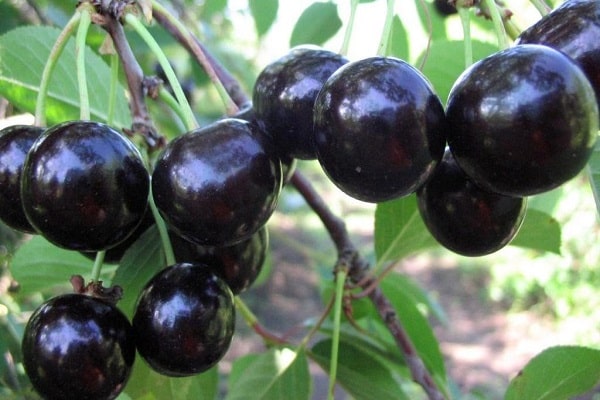
Spunk
There are several varieties of this variety, they differ in some ways:
- Ripening time.
- The height of an adult plant.
- Adaptation to the conditions of different growing regions.
Cherry Spunk productive and unpretentious. Fruiting occurs in the 5-6th year of tree planting.
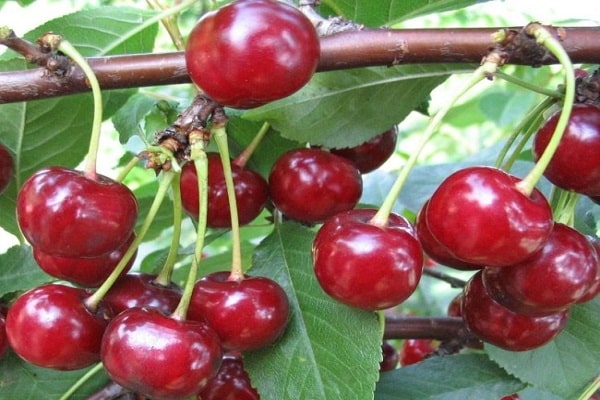
Characteristic:
- height 6 m;
- self-infertility;
- frost-resistant;
- the crown is powerful, branched;
- flowers of a white shade;
- with a flattened-rounded shape of berries;
- burgundy color,
- the shade of the pulp is light yellow;
- sweet, with a characteristic sourness of cherries;
- weight 5 g;
- the bone is easy to separate;
- harvest volume 40 kg per plant.
When growing the Shpanka variety, it is recommended to clarify what kind of variety the gardener is going to acquire.
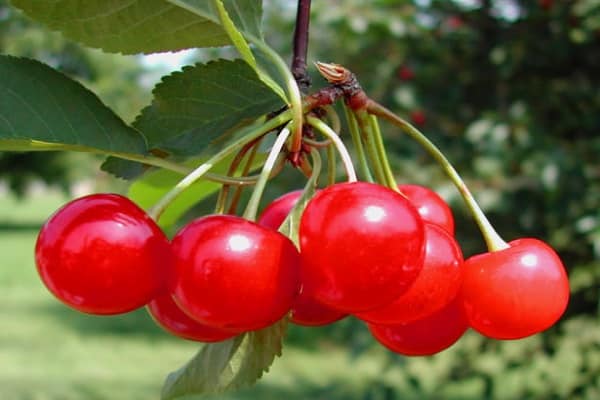
Youth
A relatively young tree species that becomes a favorite of summer residents. The reason is the compactness and bush type of cherry. The yield is high, the berries are tasty, suitable for any application.
Specifications:
- an adult plant reaches 2-2.5 m;
- round crown;
- branches are down;
- compact;
- self-fertile;
- frost-resistant;
- flowers are white, large;
- fruits are round, fleshy;
- weight 5 g;
- harvest volume 15 kg per tree;
- Begins to bear fruit from the age of 4-5, with proper care it reaches 20 years.
Young cherry has a weak immunity, but applying the necessary agrotechnical methods of care, the gardener helps to fight pathogens.

Mid-season
With proper care and the implementation of certain techniques in Siberia and the Urals, a crop is obtained from trees of medium ripening. At the same time, you do not need to do anything special, water it in a timely manner, remove weeds, feed young and adult trees.
Ashinskaya
Has a long fruiting period, almost 35 years. Practically undemanding to care.
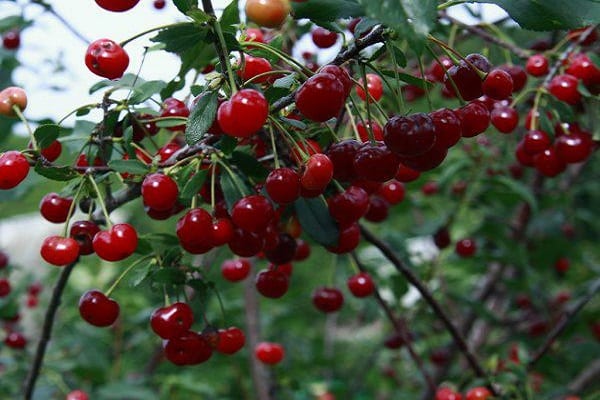
Specifications:
- an adult plant reaches 3 m;
- self-fertility;
- the crown is cylindrical;
- large berries;
- weight 5 g;
- shade dark red;
- flattened-rounded fruits;
- sweet, almost no sour taste;
- yield 12 kg per plant;
- easily transported.
Cherry's many positive properties make it popular among gardeners.
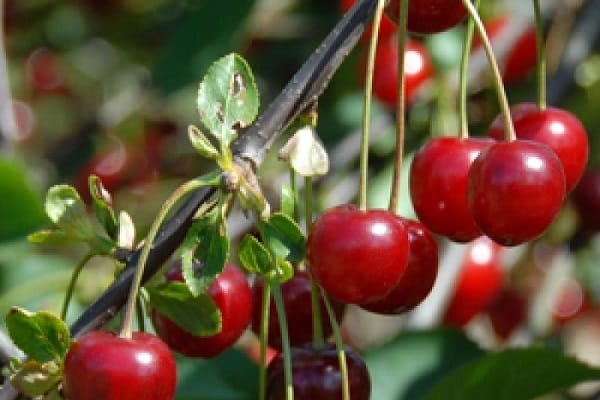
Maximovskaya
This cherry saw the light back in 1985. Now she has become a favorite of gardeners who, observing all norms and requirements, take care of the plant.
Specifications:
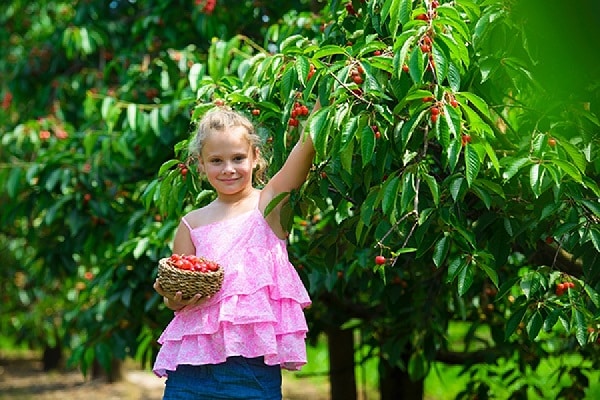
- an adult plant reaches 1.5 m;
- the crown is powerful but compact;
- bears fruit for 35 years;
- frost-resistant;
- unpretentious;
- rounded berries;
- the shade of the fruit is dark red;
- sweet and sour taste;
- weight 4.2 g;
- stored medium;
- harvest volume 15 kg per tree.
The peculiarity of the species is the root system. The main root goes into the ground to a depth of 2.5 m. Accordingly, the tree is not afraid of a lack of moisture.
Maksimovskaya cherry is not picky in care, observing the usual norms of agricultural technology, they receive the declared harvest.
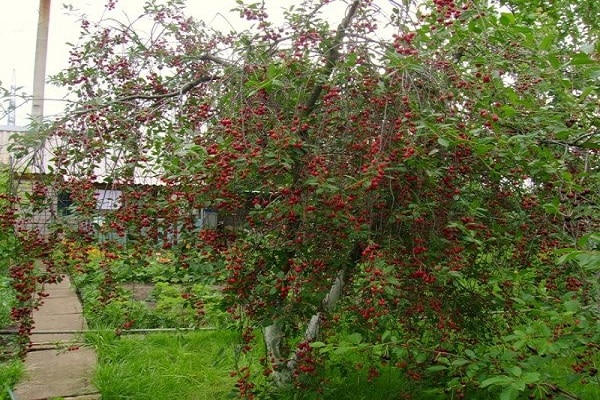
Troitskaya
The variety is fruitful, grows in various forms, strongly branched. This does not affect the quantity and quality of fruits.
Specifications:
- an adult plant reaches 1.5-3 m;
- the crown is pyramidal;
- flowers are pink;
- the shape of the fruit is wide-round;
- color is dark red;
- weight 4.2 g;
- tasting score 4.2 points;
- the bone is well separated from the pulp;
- ripens at the end of July;
- has an average resistance to frost, drought and heat;
- begins to bear fruit from the 4th year of the seedling's life;
- yield 10 kg per bush;
- fruits do not crack during mechanical harvest.
The tree propagates easily with green cuttings.
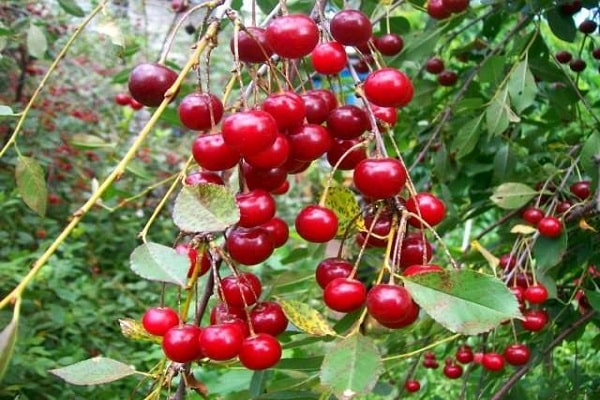
Michurin's vole
For its unpretentiousness, the tree becomes a favorite for many gardeners. Growing cherries in the garden does not cause any difficulties at all, not only for experienced summer residents, but also for beginners. Thanks to the genes of its progenitor, the field cherry, the tree inherited the genes of endurance.
Specifications:
- an adult plant reaches 2-2.5 m;
- self-infertile;
- the crown is wide;
- flowers are white;
- red fruits;
- weight 3.5-4 g;
- the taste is sweet, acid is almost not felt;
- cherries are not stored for long.
Thanks to the adopted genes, Michurin's Vole is very cold-hardy, resistant to drought and unfavorable weather conditions.
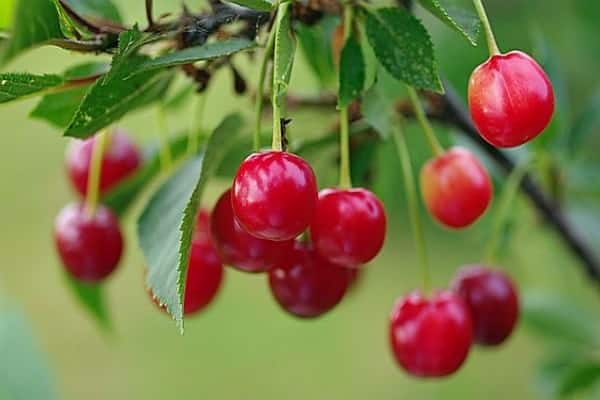
Morozovka
An excellent variety for Siberia and the Urals. Differs in high winter hardiness and immunity to coccomycosis.
Specifications:
- an adult plant reaches 2.5 m;
- spherical crown;
- flowers of a white shade;
- large fruits;
- weight 5 g;
- round shape;
- the color of the berries is dark red;
- the taste is sweet and sour;
- not stored for long;
- transfers transportation and maintains a marketable appearance.
When caring for a tree, pruning is mandatory, this process significantly affects the yield.
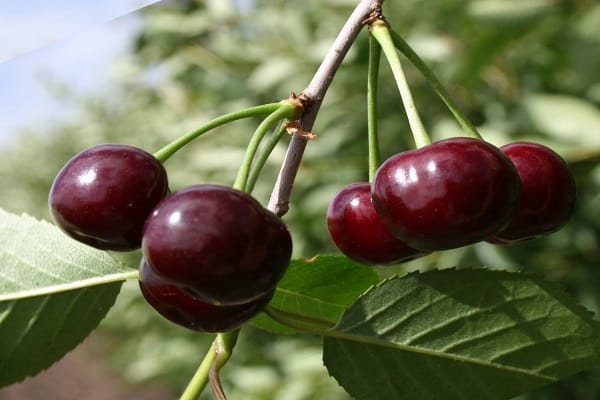
Griot of Moscow
A relatively old variety that is still popular with gardeners. Cherries are fruitful, tasty and unpretentious to care for.
Specifications:
- an adult plant reaches 2.5 m;
- spherical crown with drooping branches;
- fruit weight 3.5 g;
- round shape;
- red color with dark shades;
- self-infertile;
- winter-hardy;
- bears fruit for 16 years;
- yield 9 kg per tree.
The stone separates very poorly from the pulp.
Despite the plant's high resistance to cold, it is recommended to cover the roots and trunk of the tree for the winter.
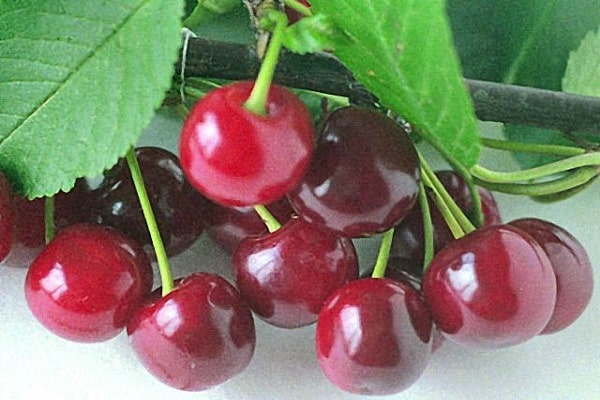
Late
Despite the short summer and the early onset of autumn cold weather in Siberia, many summer residents grow varieties of late-ripening trees. Such varieties must have a high level of resistance to cold and immunity to diseases characteristic of this category of fruit plants.
Precious Carmine
The cherries of this variety are bright red, which is why it got that name. The tree is capable of self-pollination, frost-resistant.
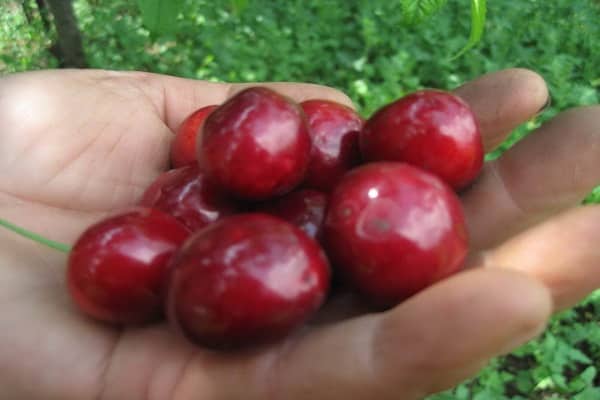
Description:
- the size of an adult plant is 2 m;
- the crown is wide;
- the shape of the fruit is oval;
- weight 3.5 g;
- the taste is sweet and sour;
- fruiting occurs in the 3rd year;
- the maximum yield per plant is obtained in the 8th year;
- ripens by mid-August.
When the necessary conditions are created, up to 15 kg of cherries are obtained from the tree. But if there is no proper care, then only 4-5 kg.
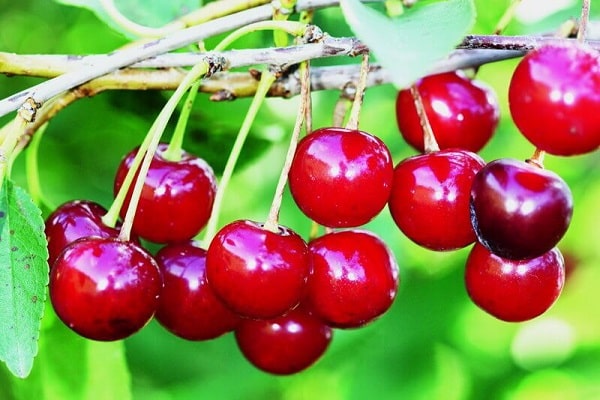
Subbotinskaya shrub
The variety is heat and drought tolerant. It perfectly tolerates severe winters, thanks to these indicators it is gaining popularity in the gardens of Siberian summer residents.
Description:
- the size of an adult plant is 2.5 m;
- spherical crown;
- burgundy bark;
- flowers are pink;
- scarlet fruits;
- weight 4.2 g;
- the taste is excellent;
- yield 9 kg from 1 plant.
It is necessary to plant pollinating varieties in the neighborhood, this will help increase the productivity of the bushes.
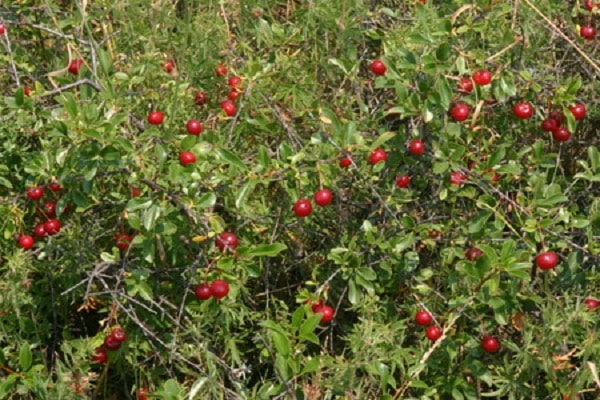
Biryusinka
A high-yielding late-ripening cherry variety. The average crop volume per season is 20 kg per bush.
Description:
- the size of an adult plant is 2 m;
- the crown is wide;
- fruit weight 6 g;
- color is dark red;
- the taste is excellent, with sourness.
Great for any kind of processing and harvesting for the winter.
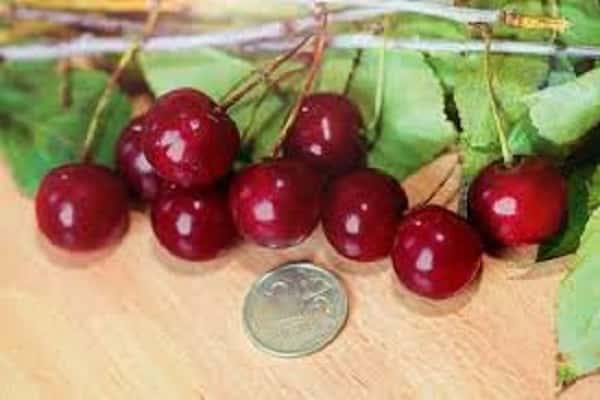
Abundant
Summer residents first heard about her in 1992. The beginning of fruiting occurs in the 3-4th year of life. In subsequent years, the volume of fruits grows.
Description:
- the size of an adult plant is 2 m;
- the crown is wide, spreading;
- blooms in white;
- the fruits are round;
- dark in color;
- the taste is sweet and sour;
- weight 3 g;
- transfer transportation over short distances.
The berries do not ripen at the same time, so they are harvested in parts. Use the fruit for juices, wine making, liqueurs and other processing methods.
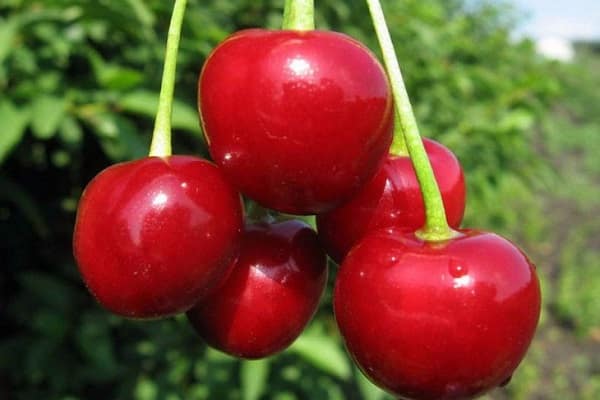
Gridnevskaya
Thanks to its high yields and resistance to cold winters, the variety has become popular in Siberia and the Urals.
Description:
- the size of an adult plant is 2.5 m;
- the crown is wide, thickened;
- the mass of berries is 3 g;
- color red;
- characteristic taste;
- the yield of an adult plant is 15 kg.

Sverdlovsk
Cherry ripens by mid-August; if all the requirements of agricultural technology are observed, a good harvest is obtained.
Description:
- the size of an adult plant is 2.2 m;
- the crown is round;
- blooms white;
- fruits weigh 5 g;
- diameter 17 cm;
- dark berries;
- standard taste;
- calmly transfers transportation;
- fruiting continues for 30 years.
When thickened, the berries become smaller and ripen longer. To prevent this, it is recommended to regularly prune the bushes.
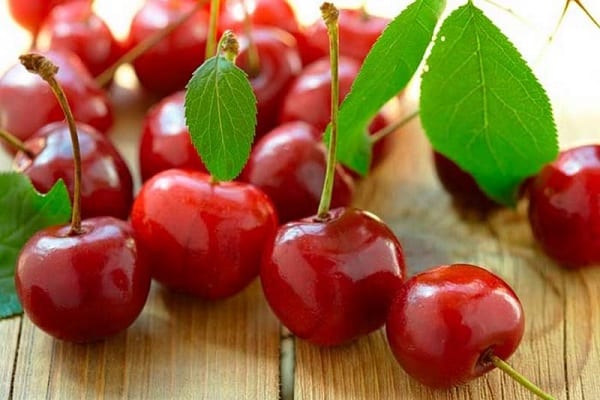
Ural Ruby
The variety has been known to summer residents for a long time. They took it out in 1950. To this day, the cherry does not lose its fans, but, on the contrary, gains new ones.
Description:
- the size of an adult tree is 1.5 m;
- yield 7 kg per plant;
- the shape of the fruit is round;
- the color of the berries is ruby;
- weight 4 g;
- fruiting continues for 30 years.
The tree is self-fertile, it is recommended to plant pollinators.
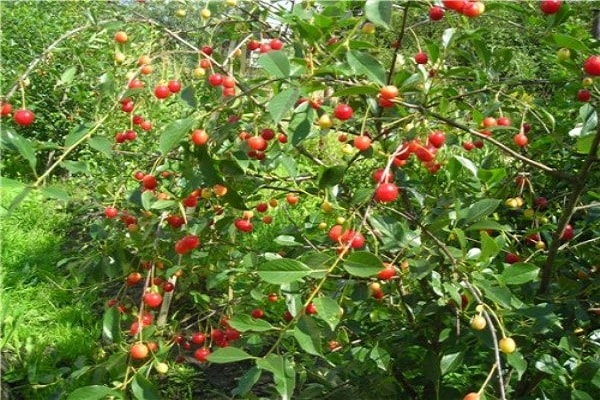
Generous
One of the cherries involved in breeding the variety was the steppe cherry. Her genes were fully transferred to the Generous variety.
Description:
- the size of an adult tree is 2 m;
- the crown is wide and rounded;
- flowers are white;
- the shape of the berries is round;
- weight 4 g;
- color red;
- the bone is easily separated;
- taste is standard.
The yield of the variety is high, the bush begins to bear fruit in the 3rd year and continues to bear fruit for 30 years.
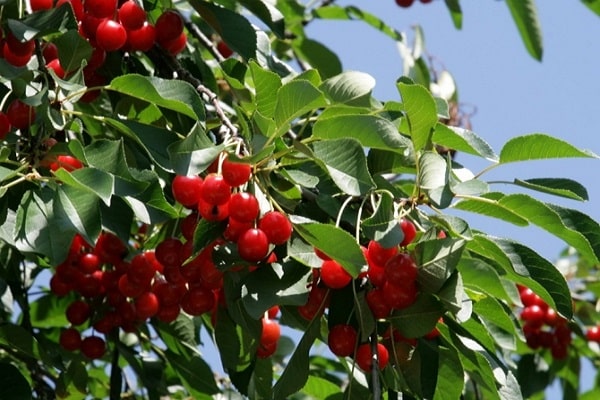
Robin
The cherry variety known to many summer residents is popular. Gardeners love it for its high, stable yield and unpretentious care.
Description:
- the size of an adult plant is 3.2 m;
- the crown is round;
- fruits are dark;
- weight 5 g;
- characteristic taste, slightly sour;
- drought-resistant;
- frost-resistant;
- yield 13 kg per bush.
There are many varieties zoned for the Urals and Siberia, it is necessary to properly care for them, and the result will not be long in coming.
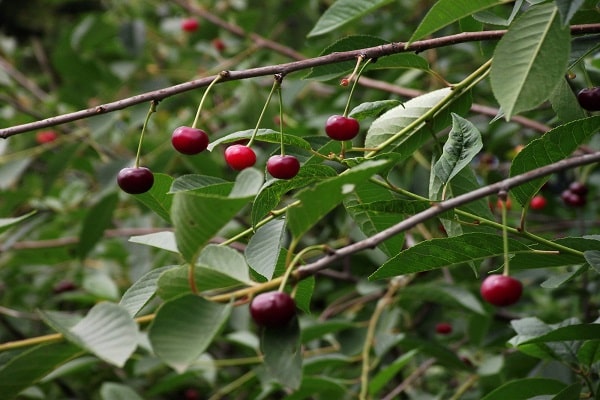
Planting and caring for a fruit tree
Growing cherries on the site is a complex process. It is not enough to simply purchase a seedling. It must be properly planted, then properly maintained. This is the only way to achieve results. It is better to plant a plant in the fall, it will take root better and start growing in early spring.
Watering and fertilizing the soil
These agricultural practices, carried out in the open field, depend on the variety of the fruit tree and the soil composition in the place where the seedlings are planted. Top dressing is selected based on what the plant lacks.
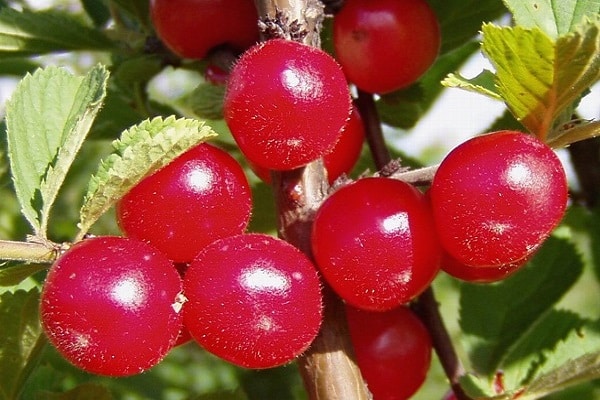
Initially, it is necessary to apply complex mineral fertilizers, as well as organic matter. Then, as the bush grows, carefully monitor the appearance. The plant itself will show what it lacks.
An adult tree is fed once every 2 years.
Watering is carried out often, but only while the tree is small, then it is reduced to 3-4 times per season.

Foliar dressing
Carried out at any time, except for winter. Trees are sprayed with nutrients that help plants get the necessary supply of minerals.
Through foliage, nutrients spread faster through the tree and are beneficial. Thanks to this method of feeding, trees gain strength and grow better.
Urea and potash fertilizers are used. Processed after flowering and fruiting.
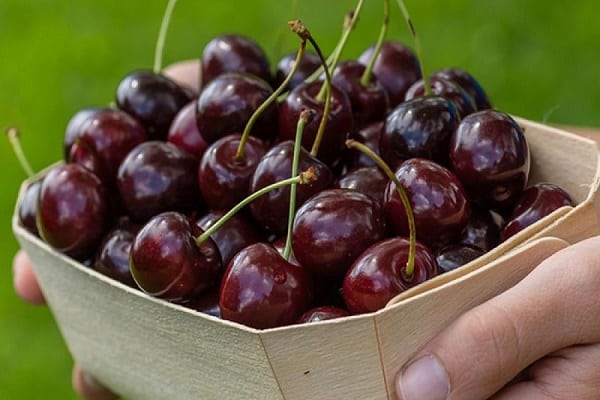
Trimming and forming
These procedures also depend on which variety the grower is growing. Some cherries need to be pruned already in the second year of life, and some only after the first fruiting.
Sanitary pruning is done at any time. Forming in spring or autumn. Cutting places are treated with garden pitch. It is best to prune trees in the spring, as in the fall, improper pruning even leads to plant death.
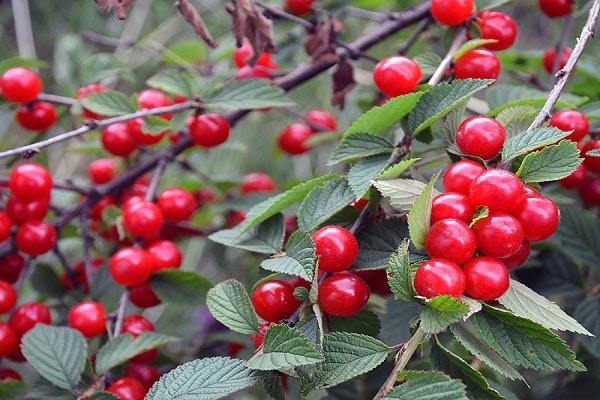
Protection against diseases and pests
The fight against diseases of fruit trees is ongoing. Preventive treatments are recommended. Because it is more difficult to treat plants than to feed cherries on time.
Most often, fruit get sick:
- coccomycosis;
- clotterosporia;
- monoliosis;
- anthracnose and other diseases.

Plants that are infected with any disease are easily identified by their appearance. It is enough to carefully examine the trees and detect changes in time.
Spraying with various chemicals is also carried out against pests. They are effective, but not safe for humans. Therefore, their use is advisable only before flowering and fruit formation. Then they try to use folk remedies for insect control.
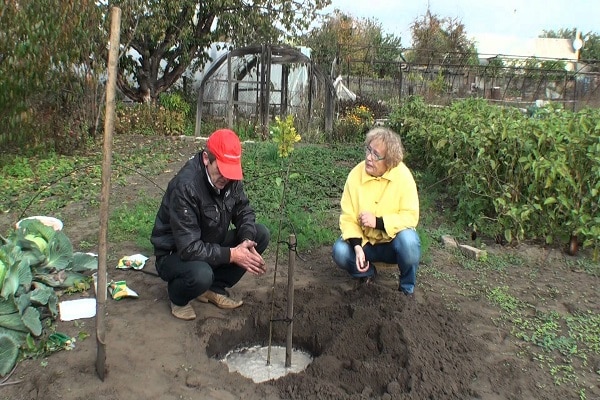
What problems can you face
There are many problems in growing, it is especially difficult for a beginner to cope with them. But when you read the advice of experienced summer residents, you can easily cope with any misfortune:
- Cherry does not bloom. There are several reasons, perhaps the tree is sick, or it lacks nutrients.
- Worms in berries. Special treatment is required from pests that lay eggs.
- Cessation of growth. Lack of nutrients, improper location, insufficient watering and much more.
- Falling fruit. The reason is the high acidity of the soil. By normalizing the pH, the yield is increased.
- Overgrowth. A common problem for gardeners. They buy a cherry that does not sprout, then this problem will disappear immediately. If the cherry is overgrown, then in early spring a horizontal cherry root is found, shoots are removed without leaving a hemp. The place of the log house is treated with garden pitch.
Growing cherries in the climatic conditions of Siberia and the Urals is quite realistic. All planting and growing rules must be followed, and the plant will thank you with the harvest.
